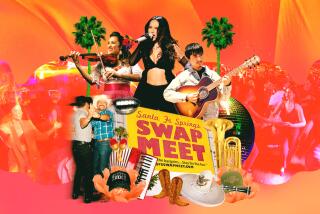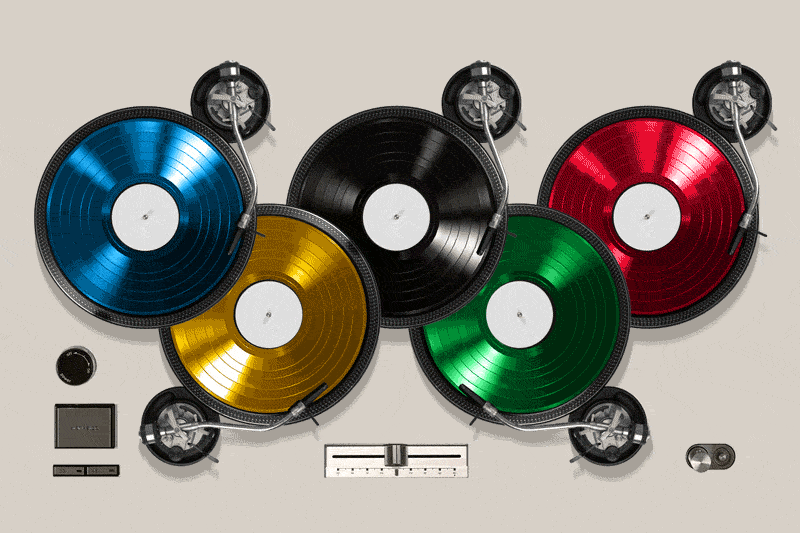COVER STORY : The Evolution of the Techno Sound
What sounds will you hear at a rave?
Mostly techno music--an energetic dance hybrid that reflects such club and street influences as rap, industrial, house and everything in between. Think of a fusion of New Order’s synthesizer foundation and C+C Music Factory’s house flair.
As an art form, techno resembles both early rock ‘n’ roll and rap in that much of it is largely homemade, the product of recording amateurs whose chief initial outlet is rave or dance-club play.
Barry Weaver, a prominent Los Angeles rave deejay, says much techno ends up out of print only months after its first release, usually on a blank, white label. “The music is like fast food--it doesn’t have a long life span at all. It’s just tracks mixed together and it’s easy to make.”
Deejays point to Kraftwerk, the German techno-pop pioneers from the ‘70s, as the starting point in the evolution of a sound that now finds strong musical bases in Belgium and England.
The style, which is also being produced heavily in Detroit and New York, broke open last year in Southern California with 808 State’s “Cubic,” a fast-moving synthesized song that received enormous play on both KROQ-FM (106.7) and particularly MARS-FM (103.1), which now is the area’s chief techno proponent.
Clubs ranging from Hollywood’s Aerial to San Diego’s Smile bounce to techno music and several Southern California import shops--including Street Sounds in Hollywood, Prime Cuts in West Hollywood, Record Reaction in Long Beach and AC&S; Records in Chula Vista--specialize in techno and house music.
Few of the songs are available on compact disc because techno press runs are often small. Some labels, however, have put out well-rounded compilations on CD, including “Order to Dance III,” put together by Belgium’s R&S; label.
The following list of techno jam standards was compiled with the help of deejays Weaver and Rik Marino:
L.A. Style’ s “James Brown Is Dead” (Watts Music/Arista). An inviting mix of a stark, dramatic marching beat and whimsical undercurrents.
Guru Josh’s “Hallelujah” (Virgin International import). An imaginative, hyper-active work whose power rests in its contrast between a hard-edged synthesized melody and a sample of church choir singing “Hallelujah.”
Eon’s “The Spice” (Vinyl Solution import). This 1990 fave set a high standard for the search for the most energetic techno pulse. It also helped define the style of an overstated melody and a purposefully understated chorus. In this case: “The spice must flow.”
Moby’s “Go!” (Outer Rhythm). The popular, radio version of this song is subdued and reminiscent of the slower but bouncy beats of house music. But if you saw Moby perform at Vertigo recently, you know that “Go!” has an energized flip-side mix that takes on a punk-like momentum.
Human Resource’s “Dominator” (R&S; import). The future of techno. The melody sounds like an accidental record scratch played over and over, creating an ominous sound as a backdrop for a rap sample that goes, “I’m the one and only dominator.” Weaver says this approach is especially popular with Detroit techno acts.
The Prodigy’s “Charly” (XL Recordings import). This is yet another techno jam that juxtaposes power and innocence, with a hard, fast beat and a chorus sampling a child who recounts, “Charly says always tell your mom before you go outside.”
More to Read
The biggest entertainment stories
Get our big stories about Hollywood, film, television, music, arts, culture and more right in your inbox as soon as they publish.
You may occasionally receive promotional content from the Los Angeles Times.










